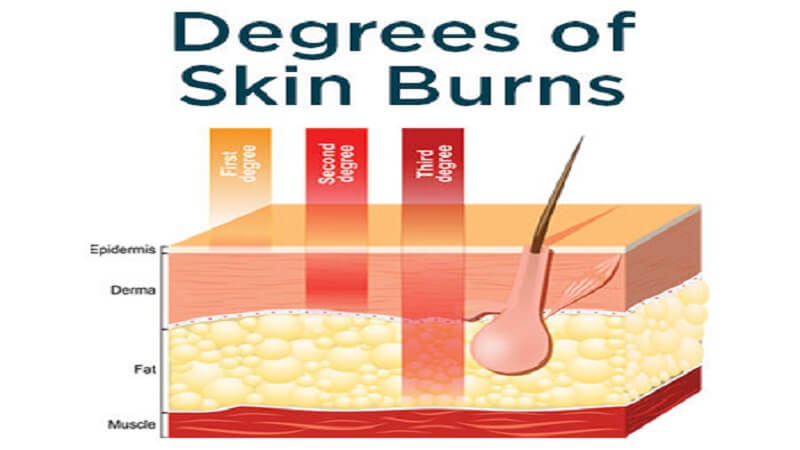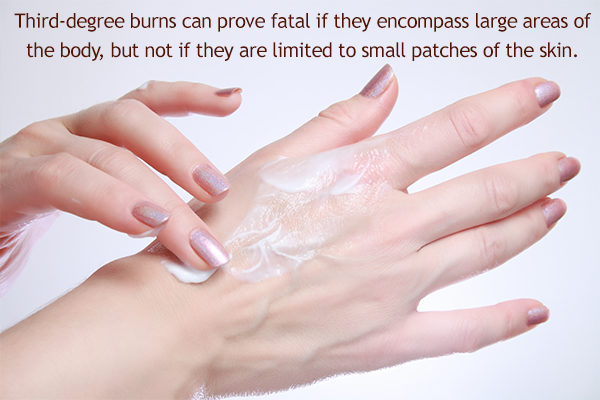
#6th degree burn skin#
Scalding, for example, can cause all three burns, depending on how hot the liquid is and how long it stays in contact with the skin.Ĭhemical and electrical burns warrant immediate medical attention because they can affect the inside of the body, even if skin damage is minor.įirst-degree burns cause minimal skin damage.

The type of burn is not based on the cause of it. fires, including flames from matches, candles, and lighters.This type of burn includes all of the symptoms of a third-degree burn and also extends beyond the skin into tendons and bones.īurns have a variety of causes, including: third-degree burns: widespread thickness with a white, leathery appearance.second-degree burns: blisters and some thickening of the skin.first-degree burns: red, nonblistered skin.Each degree is based on the severity of damage to the skin, with first-degree being the most minor and third-degree being the most severe. A Phoenix personal injury lawyer can help determine who is liable and responsible for your medical bills.There are three primary types of burns: first-, second-, and third-degree. If you have received a fifth degree burn due to an injury on the job or at home, you may be eligible for compensation. Who Is Liable for Your Fifth Degree Burn? Scientists, medical workers, and manufacturers are some of the workers who encounter these dangerous chemicals in their profession.

This type of burn usually happens in the workplace with professions that use chemicals on a regular basis. Certain chemicals can cause burns similar to a burn from flame. Food service workers are particularly susceptible to these types of kitchen accidents. It is very hard to remove because oil does not come off with water, making emergency removal extremely difficult. Oils stick to the skin, causing extended damage to the surrounding muscle and tissue. Cooking and baking can result in burns, but one of the biggest dangers for burns in the kitchen is hot oil.

Electrical fires are a job hazard for electricians and cable workers. Electrical burns can result from contact with exposed wires chewed by rodents, or that have disintegrated over time. Appliance cords in disrepair also pose a threat with electrical burns. Large appliances use twice the voltage as smaller appliances, making them more of a danger and a larger fire hazard. Electrical fires are dangerous and hard to control. Sometimes these devices backfire and an electrical fire breaks out. Modern convenience depends on electronic devices. House fires not only burn the people who live in the home but also the emergency personnel who come to aid those in peril. In the United States, nearly 3,400 victims die in home fires every year. Loss of function of the area usually occurs.įifth degree burns come from the same sources as other burns but are usually more extensive and damaging. They include charred bone, with muscle and skin burned away. A loss of function in the area is a high probability. Fourth degree burns penetrate through all layers of the skin and into the underlying muscle layer and ligaments. The site of the burn may appear white in color or charred. Third degree burns destroy the top layer of skin, the second layer of skin and penetrate the subcutaneous tissue below. The burn usually appears red and blistered. Second degree burns involve the first layer of skin and the second layer of skin. They are usually superficial and do not cause blisters. First degree burns only affect the outer layer of the skin. To understand the different levels of burns, here is a short explanation of each degree: Loss of function can also lead to an amputation. Muscle grafting and bone grafting take time to heal, leaving the burn victim unable to use the affected area for a long period of time. Grafts are generally necessary to pull the damaged area back together. The human body is not able to regenerate muscle and bone as it does with skin. Char is possible is third degree burns but is more likely in deeper and larger burns.īecause fifth degree burns destroy the skin and the muscle over and entire area, a loss of function is often a side effect. When char is present, the wound requires a graft and will leave a permanent scar. Char results when the oxygen and hydrogen in the skin burns. It is not uncommon to see charred bone in a fifth-degree burn. Fifth degree burns result in all the skin and most of the muscle layer and ligaments in the area burned away.

All burns are dangerous and can lead to further injury, but fifth degree burns can be catastrophic.


 0 kommentar(er)
0 kommentar(er)
